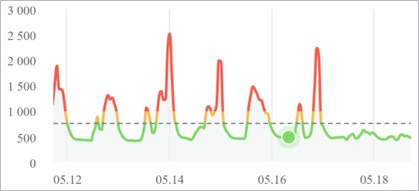
Indoor Air Quality monitoring is a potential solution to the COVID-related staffing crisis plaguing the public services industry. COVID transmission risk is particularly high in public spaces such as pubs, cafés and restaurants. This can be improved by changing occupant behaviour and increasing natural ventilation. However, implementing these solutions may impact the occupant experience and reduce trade.
Through the use of indoor air quality monitoring, COVID-transmission risk can be tracked through live data reporting, and mitigation measures can be targeted to improve conditions at minimal risk to business owners. Indoor air quality monitoring involves installation of discrete devices that monitor carbon dioxide levels in air (carbon dioxide is an indicator for air quality and correlates with transmission risk. See our recent article on this). Levels are subsequently fed to an online dashboard, where analysis of trends allows for targeted increases in ventilation rates and window openings during the worst-case hours.
The figure below demonstrates a typical trend for public spaces; CO2 levels exhibit a daily cycle which may indicate higher transmission, likely due to high occupancy with insufficient ventilation. Through installation of an air quality monitoring system, risk can be minimised effectively, resulting in a safer environment for occupants and staff.
Figure 1: Typical Indoor Air Carbon Dioxide levels in a public space (ppm)
Posted on May 31st, 2022
Author: Harry Fry
Related services: Overheating Assessment, Indoor Air Quality, Health Impact Assessments, Indoor Environmental Quality Evaluation, Building Performance Evaluation,
